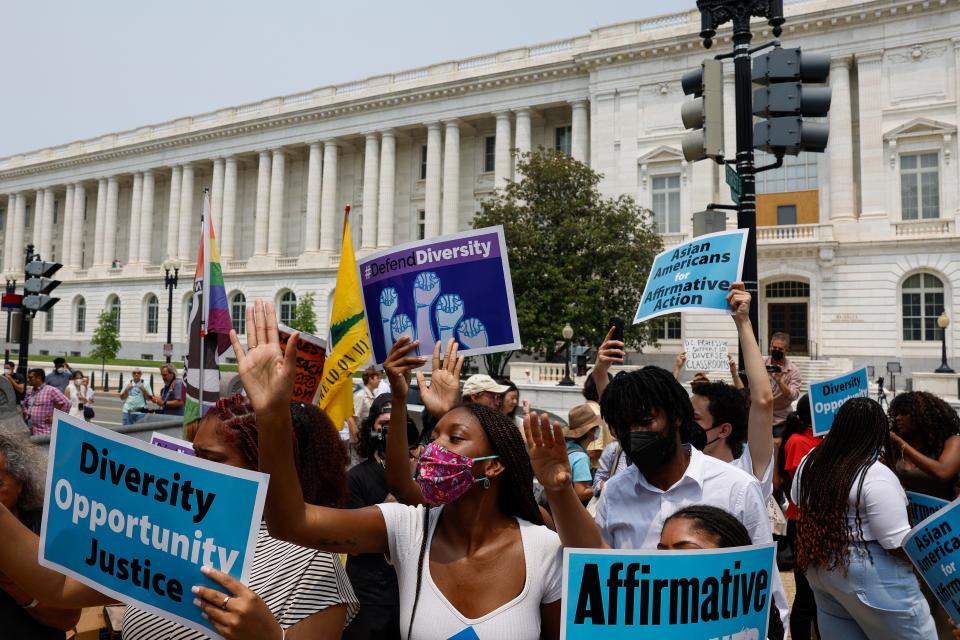Affirmative Action is gone. Higher education access remains a fact in the U.S. Here's why
When the U.S. Supreme Court struck down the use of affirmative action in college admissions last month, it didn’t only upend long-established practices and policies designed to ensure student body diversity at colleges and universities nationwide. It also created confusion for students and their parents, who will now be facing the application process, always daunting and often more than a little bit frightening, with new and not yet clear rules and expectations.
But the good news is that for the overwhelming majority of American students, not much has actually changed. Indeed, if there is any silver lining in the high court’s reversal of its long-upheld and refined precedent, it may be that all of us — students, parents, educators, college counselors — can use the opportunity presented by this moment to shift our national outlook away from an obsessive focus on a small handful of brand-name colleges and instead toward a broader and ideally healthier perspective on admissions that looks more holistically at the wide swath of institutions that serve the overwhelming majority of American students — without the agony of high-stakes admissions.
What to know: A breakdown of the Supreme Court's affirmative action decision

Here’s the truth: More than half of American colleges and universities admit more than two-thirds of the students who apply to them, according to a Pew Research Center analysis of U.S. Department of Education statistics. And about 75% of all first-year students report being accepted by their first-choice school, regardless of whether they ended up attending it, according to UCLA’s annual The American Freshman report.
In other words, the vast majority of students have the chance to go to exactly the college they want to.
So why do we worry so much about admissions policies at these super-selective schools? Because it’s true the elite educational institutions can help provide entry into the elite leadership institutions of American life. Until President Joe Biden, each of the last five presidents held at least one Ivy League degree, and a few of them had two. Eight of the current Supreme Court justices earned their law degrees at Harvard or Yale. When I was vice president and general counsel at the University of Michigan, a key part of our successful defense of race-conscious admissions policies in Grutter v. Bollinger rested on the idea that it was important to create viable pathways to a diverse leadership class.
“In order to cultivate a set of leaders with legitimacy in the eyes of the citizenry,” Justice Sandra Day O’Connor wrote for the court in that 2003 case, “it is necessary that the path to leadership be visibly open to talented and qualified individuals of every race and ethnicity.”
More perspective: Affirmative action didn't give me a handout. It gave me an opportunity.
Another view: What do you need to get into college? How 'objective' assessments fail students.
But I fear we’ve also allowed our obsession with getting our kids into the best possible colleges — our natural parental instinct to ensure we’re setting our kids up for the best possible lives — to sometimes blind ourselves to the recognition that the right question isn’t what college is the best but what college is the best for an individual student.
Today I am the president of Pace University, with campuses in Manhattan and Westchester County. We have never practiced affirmative action, because we don’t need to: we are not a highly selective school, and our applicant pool is wonderfully diverse. We are able to achieve a proudly diverse student body by admitting students —new freshmen, community college transfers, adult learners — who want to experience what we have to offer: small classes, personalized advising, access to the most dynamic region in the world and our signature educational model, the Pace Path, which combines real-world experiences with classroom education to ensure students get a chance to do the things they’re learning about.
Our world-class performing arts programs draw students who want to work on Broadway and in TV and film. Our top-ranked athletics programs — including our national champion women’s lacrosse team — draw area athletes to our Westchester campus. Our long history as an accounting powerhouse, and our tight partnerships with Big Four firms, draw budding CPAs. And our astronomical career placement rates draw students determined to graduate and get right to work.
There are schools like ours all across the country, and we offer truly excellent educational opportunities to students from all sorts of backgrounds who want to work hard, learn new things and get ahead.
It’s true that the recent court decision will make it harder for the small handful of super-elite schools to ensure that they can ensure the diverse student bodies they seek. But this can also be a reminder to students and families of all the excellent institutions beyond those big brand names that do offer diversity and opportunity — and a perfect fit for everyone.
Marvin Krislov is president of Pace University, which has campuses in Manhattan and Westchester County.
This article originally appeared on Rockland/Westchester Journal News: Affirmative action ruling: We can move past elite schools

